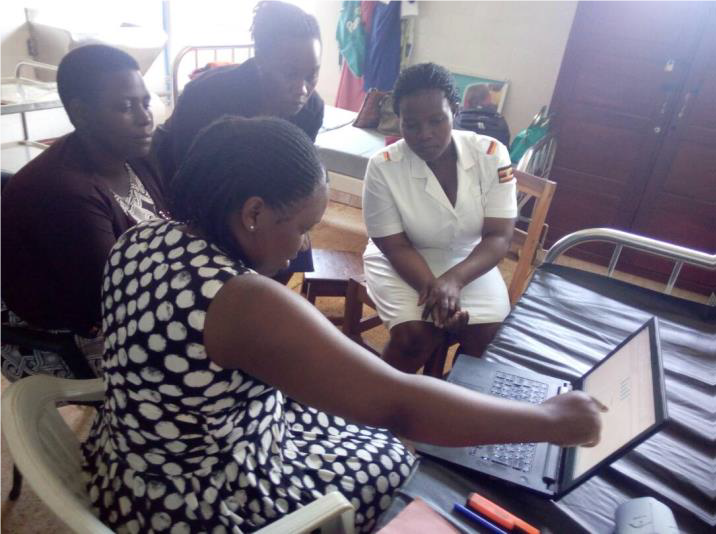 |
Dr. Miriam Nakanwagi
|
ABOUT THE FELLOWMotivation for joining the program I henceforth embarked on the program with a deep seated desire to sharpen my skills in epidemiology. The two years on the program gave me a platform to achieve this and so much more. Achievements at the host site
Key deliverables on the Fellowship ProgramOutbreak investigations and other projects
Scientific communication and writing
Written Communication
Summary of Epidemiological Study: Title: Low HIV Seroconversion Proportions on Repeat Testing in Maternity in Kayunga Hospital, Uganda, 2018 Authors: Miriam Nakanwagi1*, Mathias Kigozi2, Suzan Nakazibwe2, Benon Kwesiga1, Lilian Bulage1, Daniel Kadobera1, Steven Ndugwa Kabwama1, Alex Riolexus Ario1, 1Uganda Public Health Fellowship Program, 2Kayunga Hospital Abstract Introduction: A previously HIV-negative woman during antenatal care can seroconvert to an HIV-positive status later during pregnancy which necessitates HIV re-testing in maternity. An HIV re-test is done three months after the previous test. Generally, HIV re-tests are hardly done in maternity. We used Quality Improvement (QI) approaches and aimed to increase the proportion of HIV re-testing in maternity in Kayunga hospital to 95% and to determine the proportion of women that seroconverted to HIV positive status on a re-test. Methods: We established the baseline metric by ascertaining the proportion of women that had had an HIV re-test in maternity in Kayunga hospital from January to June 2018. We trained the maternity staff on the correct eligibility for an HIV retest and the correct Prevention of Mother to Child Transmission of HIV (PMTCT) codes. We also created a column for eligibility for re-test in the integrated maternity register. We analyzed the proportions of women that had an HIV re-test done in maternity during July to October 2018 and compared with the baseline proportions. We also analyzed the proportions of women that seroconverted on a re-test in maternity. Results: At baseline, of 447 women attending maternity from January to June, 324 (72%) were eligible for a retest. Of these, 61 (19%) had had a retest done in maternity. The re-testing proportions increased from 31 of the 35 eligible (87.5%) at the start of the intervention to 70 of the 71 eligible (98%) at the end of the intervention. Overall, 206 (93%) of the 221 eligible women had had an HIV re-test in maternity during this period. Of 206 women that re-tested in maternity, two women (1%) seroconverted to an HIV positive status. Conclusion and Recommendations: From 2012-2016, the fatal RTI rate decreased by 29% in KD. However, the fatal RTI rate in KD is still almost twice as high as the global rate (17.4). There is a need to establish interventions to curb RTIs and reduce reckless driving. RTI prevention strategies in KD should emphasize vulnerable road users (pedestrians/motorcyclists) and young adult males, who bore the highest proportional burden of RTIs. Key skills/competences acquired
|
|
Sign in
Sign in
Recover your password.
A password will be e-mailed to you.

